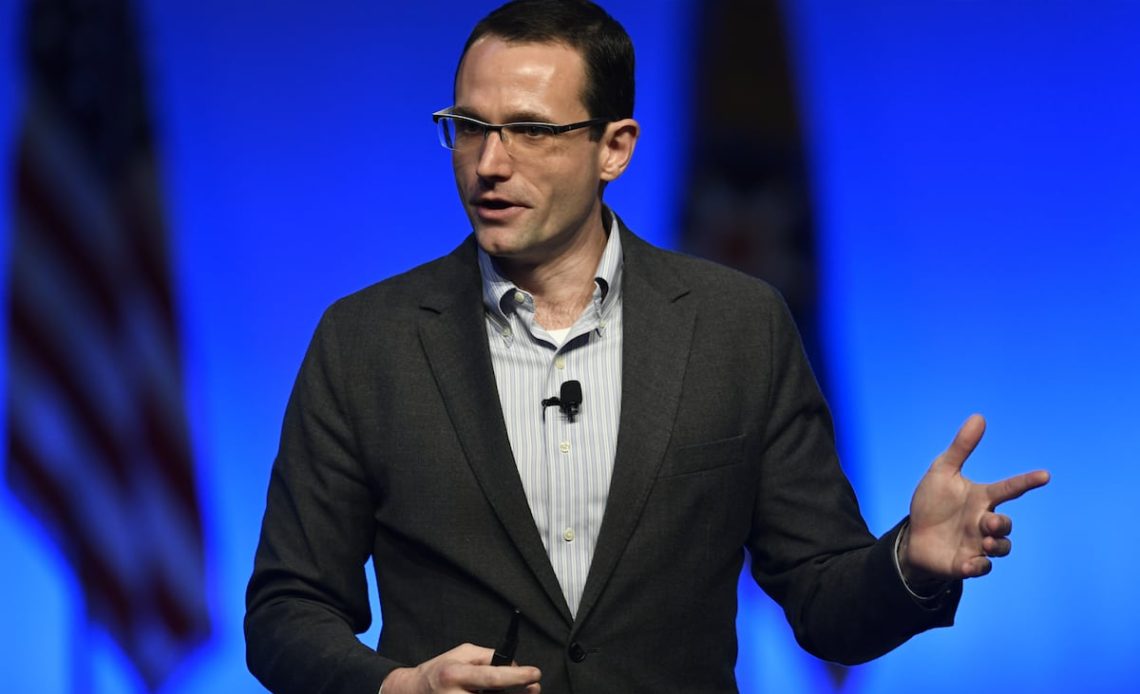
Istari Digital, a startup led by former Air Force acquisition chief Will Roper, is partnering with Lockheed Martin Skunk Works to demonstrate the ability to digitally certify an aircraft before it’s built, a process that could make it easier to develop and test military aircraft in the future.
The partnership, announced Monday, is part of a $19 million contract the Air Force awarded Istari last year through a program called Flyer One. The company will use its digital engineering platform to modify and certify a drone — in this case, the X-56A initially built in 2013 by Skunk Works, Lockheed’s innovation arm. The modifications include changes to the aircraft’s landing gear and cameras and other updates to address obsolescence.
Roper, who led the Air Force acquisition shop from 2018 to 2021, created the company two years ago to develop innovative digital engineering technology that could streamline hardware development in the same way collaborative tools have transformed software development in recent years.
The idea to digitally certify an aircraft came from a visit Roper took to McLaren Racing toward the end of his Air Force tenure. The British racing team competes in Formula One and uses digital engineering to rapidly iterate on car designs.
“They don’t win with a race car. They win with a race car building process,” he told Defense News in a recent interview. “When you look at that and you look at the defense industry where everything is built at a glacial pace, it really seemed like harnessing that was going to be critical for competition, especially with China.”
The secret to McLaren’s success, Roper noted, lies in their ability to integrate the various digital tools used to design and simulate a vehicle’s performance. This integration enables an automated workflow. Lockheed Martin, a major player in the defense sector, is also exploring similar methodologies to enhance their processes.
However, mimicking that process for the military is more complicated. Developing a race car may require hundreds of tools, but in the aerospace sector, an advanced system can require thousands. There are also intellectual property challenges, with firms hesitant to put their proprietary information on someone else’s network.
“What we had to do in aerospace was twice as hard, maybe three times as hard as Formula One because we had the challenge of aggregation and then we also had layers of classification to deal with and simply a bigger problem in terms of number of tools,” he said.
Roper said his team at Istari spent its first year or so trying to figure out how to apply McLaren’s model to defense and aerospace applications. Now, the company thinks it’s found a solution, and it’s using Flyer One and its X-56A modification as its test case.
The firm has already started working with Skunk Works on the effort and recently passed its critical design review. Its next milestone is a military flight release.
Traditionally, a program would build and fly a physical airplane, collect data and submit an airworthiness package for approval. For Flyer One, the process is similar except the data is all collected through digital models and simulation.
Roper said he expects to complete the flight certification process by the end of this year and then build the aircraft and start flying it within a year after that to determine if its flight performance matches the digital modeling.
While this type of digital flight certification hasn’t been done before, Roper said the project itself is a pragmatic one: using an existing aircraft and partnering with an established defense firm rather than designing and building a new system from scratch.
“We believe, and I think our Air Force partners would echo this, that we’re going to be able to do this because we’re not extrapolating so far that people won’t believe the models and simulations,” he said. “It’s just simply bringing into focus that we need to have a different certification process that makes sense for a world of digital design and digital testing.”
Courtney Albon is C4ISRNET’s space and emerging technology reporter. She has covered the U.S. military since 2012, with a focus on the Air Force and Space Force. She has reported on some of the Defense Department’s most significant acquisition, budget and policy challenges.
Author: Courtney Albon
Source: DefenseNews



